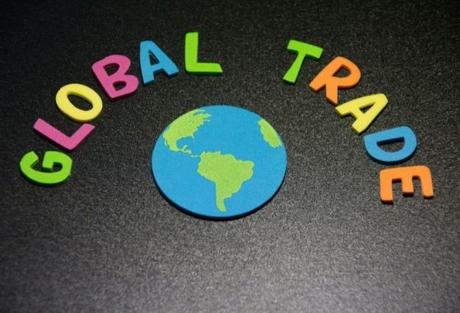Trade or the exchange of products includes several obstacles, which are alleviated by auxiliaries or extra supports called Aids to Trade.

This post will discuss some critical examples of aids to trade and their significance, plus the advantages and disadvantages of trade. But before we get into the nitty-gritty, let's understand what is meant by aids to trade, Shall we?
Aids to trade are all actions that assist the exchange of goods and services, whether directly or indirectly-they help alleviate the problems associated with trade.
What are various Aids To Trade? List
Here are 8 Aids To Trade:
Transport is the transfer of products and persons from one location to another. It makes trading more accessible by assembling and distributing items-products are produced in one area and used in another.
Through transport, consumers can obtain a wide range of items at cheap costs, encourage the specialization of business operations, break down distance barriers, and generate location usefulness.

Additionally, it broadens the market and helps to neutralize prices in various locations. As a consequence, products are distributed more equitably across far-flung places.
Transport also contributes to the expansion of the size and scope of a firm. Well-developed transport infrastructure enables industrial units to locate in the most cost-effective locations and grow to their maximum size.
Moreover, people and nations benefit from transportation because it promotes mutual collaboration and solidarity. As a result, transportation has become the lifeblood of modern industry and trade.

Furthermore, to meet seasonal demand, you must store commodities such as woolen garments and umbrellas. Warehousing eliminates the impediment of time, resulting in time utility.
It contributes to price stability by distributing surpluses evenly throughout different periods. There are three sorts of warehouses: private, public, and bonded. Merchants and manufacturers possess warehouses for their storage requirements. On the other hand, harbingers, port trusts, and other entities own public warehouses, while customs agencies establish bonded warehouses to hold items subject to customs tax.
Risks in business include pricing fluctuations, employee dishonesty, bad debts, exchange rate changes, loss of products in transit, fire, floods, etcetera. Insurance eliminates the impediment of risk.
Entrepreneurs can protect themselves from various dangers by using insurance-the "risk pooling principle" underpins insurance.

Many individuals exposed to certain risks contribute to a mutual fund, from which compensation is provided to the few who experience the loss.
By spreading the financial strain of loss across a significant number of people, the level of risk incurred by an individual entrepreneur is whittled down.
It aids in the development of a sense of security and independence from concern in entrepreneurs. People in business may conduct their operations with assurance and psychological comfort.
Typically, there is often a time lag between the manufacture or acquisition of products and their sale. It usually takes time to receive money following a credit sale of items. During this time, company owners require capital to go on with their operations.

Banks and other financial organizations offer capital and credit to company owners. On the other hand, large-scale production and distribution of goods and services require a significant monetary base at nominal interest rates.
Banks make large-scale, productive commercial activities possible through the provision of cash and security. Banks also provide a secure, fast, and cost-effective method of transferring money from one location to another.
They gather money from individuals who don't need it at a particular time and avail it to business people. Banks offer finances in various forms, such as loans, overdrafts, cash credit, bill discounting, and so on.

Advertisements draw products and services to the attention of potential buyers. It aids in emphasizing the distinguishing features and utility of various products. Besides, customers can also get more bang for their buck with the help of such information. To understand the needs of your customers, you need to perform detailed marketing research.
Fast and dependable methods of communication are required for efficient commercial operations; Posts and Telegraph, Telephone Nigams, Fax, E-mail, Internet, and so forth provide crucial means of communication for business operations.

7. Trade Promotion Organizations
Trade Promotion Organizations (TPOs) address the challenges of trade promotion and growth at the national level. The business sector establishes these groups to defend and advance its business interests.
They provide a means of promotion and growth for its membership. Additionally, the TPOs perform marketing research, serve as a clearinghouse for information, file grievances with the government, make statements, and assist the business sector in various compensation ways.
Such organizations include; The Indian Institute of Packaging, The Indian Chamber of Commerce, Export Promotion Councils, and many more.
Mercantile agents are the intermediaries who act as a link between buyers and sellers. They alleviate both of their issues-they never operate the business under their identity.

They include insurers, brokers, commission agents, auctioneers, underwriters, and other commercial agents.
The Advantages Of Trade
A country gains from international commerce in a variety of ways, including:
- It exploits a country's comparative advantage, implying that trade promotes a nation specializing in producing goods and services that it can have more successfully and at the minimum opportunity cost.
- Producing a limited variety of goods and services for the local and overseas markets allows a country to manufacture in larger quantities, which gives further cost savings through scale economies.
- Trade stimulates competition and reduces global prices, benefiting customers by increasing the spending power of their income and resulting in an increase in surplus.
- Trade also dismantles domestic monopolies, which are challenged by more effective foreign businesses.
- As competition stimulates creativity, design, and the use of new technology, the quality of goods and services is expected to rise. Trade will also promote the exchange of technology across countries.
- Because employment is directly connected to the output, trade also boosts employment. Trade implies that you can employ more people in the export industry and generate additional employment across the economy due to the multiplier effect.
The Disadvantages Of Trade
Despite the potential benefits, trading can have certain drawbacks, such as:
- Trade can result in over-specialization, putting people at risk of losing their employment if global demand falls or items for local consumption can be produced more affordably elsewhere. Job losses as a result of such changes result in severe mass unemployment . The current credit crunch has highlighted the inherent hazards of over-specialization for the United Kingdom, which is overly reliant on its financial services industry.
- Some businesses, such as newborn enterprises that may struggle to establish themselves, do not have an opportunity to expand since they face competition from several developed overseas firms.
- Local manufacturers, who may provide a one-of-a-kind product designed to fit the demands of the native market, may suffer as a result of cheaper imports destroying their market. As local manufacturers exit the market, an economy's production variety may dwindle over time.
1. What Is The Importance Of Trade To Development?
Trade is critical to eradicating global poverty. Nations active in international commerce tend to expand quicker, innovate, enhance productivity, and offer their citizens higher incomes and more possibilities. In addition, lower-income persons also gain from open trade, making products and services cheaper for them.
2. What Is The Importance Of International Trade?
International commerce between nations plays an essential role in increasing the standard of living, creating jobs, and allowing customers to enjoy a broader range of products.
3. How Does International Trade Contribute To Economic Growth?
4. Why Is Free Trade Bad For The Economy?
Free trade leads to global inequities, horrible working conditions across many developing countries, loss of employment, and economic disparity.
Any trade's aims, operation, and functioning are almost challenging to attain in the absence of Trade Aids. As a result, these auxiliaries are critical for trade and the economy.


